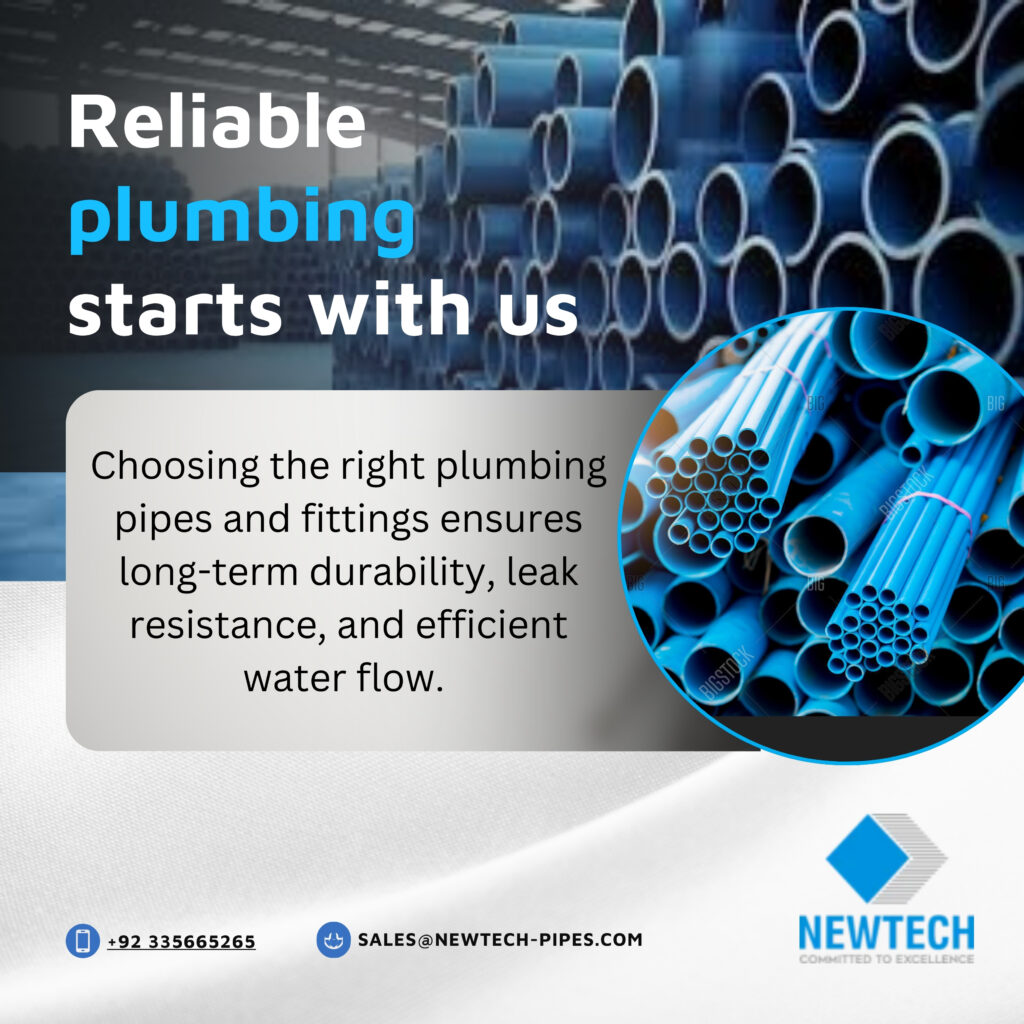The Top Plumbing Fittings and Pipes that You Should Purchase.
Selecting the correct plumbing fittings and pipes is crucial for developing a strong and effective plumbing system. Regardless of whether you are building a new house, remodeling, or replacing an existing setup, being aware of which materials will perform best will save you money and time in potential repairs and replacements down the line. At New Tech, we offer superior quality solutions to cater to both residential and commercial constructions. Stop by https://newtech-pipes.com/ for premium piping solutions.
Why High-Quality Plumbing Materials Are Important?
Plumbing isn’t a system of tubes. It’s the cornerstone of your building’s water and waste infrastructure. Substandard fittings can create leaks, contamination, low pressure, or total system failure. That’s why selecting high-quality materials isn’t an indulgence—it’s a requirement.
Copper Pipes and Fittings
Is Copper Still a Number One Material for Plumbing?
Yes, and it is no wonder. Copper has been the preferred choice because of its durability and corrosion-resistance qualities. Even with the increased price of copper, its performance and longevity make it a tried-and-true choice.
Benefits:
- Leak-proof and heat-resistant
- Safe to use with drinking water
- Recyclable and environmentally friendly
- Corrosion-resistant
Disadvantages:
- Costly when compared with plastic options
- Subject to theft because of resale value
Uses:
- Residential and commercial water pipes
HVAC:
- Hot and cold potable water distribution
- PVC (Polyvinyl Chloride) Pipes
Why Are PVC Pipes So Common?
PVC pipes are inexpensive, simple to install, and chemical- and corrosion-resistant. They’re ideal for most indoor plumbing needs.
Benefits:
- Lightweight and simple to maneuver
- Rust-proof and corrosion-resistant
- Available in a range of sizes and fittings
- Less expensive than metal alternatives
Disadvantages:
- Not ideal for hot water
- Degraded when exposed to sunlight for extended periods
- Usually not recyclable
Uses:
- Drainage and waste systems
- Cold water supply
- Underground plumbing
- CPVC (Chlorinated Polyvinyl Chloride)
- How Does CPVC Compare to PVC?
- CPVC is chemically equivalent to PVC but is chlorinated to provide greater heat resistance, allowing it to be used in hot water applications.
Benefits:
- Resists higher temperatures
- Fire-resistant
- Smooth interior surface minimizes friction
- Non-conductive
- Disadvantages:
- More costly than regular PVC
- Freezes and splits in cold temperatures
- High environmental cost during manufacturing
Uses:
- Hot and cold water distribution
- Industrial liquid handling
- Fire sprinkler systems
- PEX (Cross-linked Polyethylene)
What Makes PEX So Popular Today?
PEX pipes are easy to bend, long-lasting, and perfect for new construction and retrofits. They can be bent easily into confined spaces, and with fewer fittings required, it is easy to install them.
Advantages:
- Flexible and easy to bend
- Heat and freeze resistant
- Works well with compression fittings
- Low maintenance
Disadvantages:
- Not for use outdoors
- Special tools needed for installation
- Slightly leaches chemicals into water over time
Uses:
- Domestic plumbing
- Radiant heat systems
- Retrofitting existing buildings
- Stainless Steel Pipes and Fittings
Are Stainless Steel Pipes Worth the Investment?
While more costly, stainless steel has unparalleled durability and corrosion resistance, particularly in harsh environments.
Benefits:
- Corrosion and rust resistant
- Ideal for coastal and industrial use
- Attractive, contemporary look
- Extremely durable
Disadvantages:
- Expensive material and installation cost
- Needs special tools and expertise
Uses:
- Kitchens and bathrooms
- Coastal buildings
- Medical and food processing industries
- Brass Pipe Fittings
Why Brass Instead of Other Metals?
Brass fittings offer the durability of copper coupled with additional corrosion resistance, making them well suited to high-performance plumbing systems.
Benefits:
- Long lifespan
- Excellent heat and corrosion resistance
- Simple to thread and seal
- Won’t crack or break down
Limitations:
- Potential to contain lead (select lead-free types)
- More expensive than plastic fittings
Uses:
- Water tanks and wells
- Fittings for pumps
- Residential and commercial water systems
- uPVC (Unplasticized Polyvinyl Chloride)
How Is uPVC Different from PVC?
uPVC does not contain plasticizers and is consequently stronger and better for structural plumbing applications.
Pros:
- Impact and strong
- Non-toxic and resistant to chemicals
- Weather and UV resistant
Limitations:
- Brittle at extremely low temperatures
- Low flexibility
Uses:
- Plumbing that’s exterior
- High-pressure systems
- Ventilation systems
- HDPE (High-Density Polyethylene) Pipes
What Are the Advantages of HDPE in Plumbing?
HDPE is a new-age solution that is highly durable, flexible, and resistant to chemicals. It’s an excellent choice for below-ground installations.
Advantages:
- Leak-proof when heat fused
- Resistant to roots and chemicals
- Long lifespan (50+ years)
- Flexible and shock-resistant
Disadvantages:
- Needs special equipment for fusion
- Fewer fittings than other products
Uses:
- Water mains
- Sewer systems
- Agricultural irrigation
- Important Factors to Consider When Selecting Plumbing Pipes and Fittings
How Do You Choose Which Material Is Best?
When selecting the proper piping material, keep in mind the following considerations:
- Temperature Needs – CPVC or PEX for hot water; PVC for cold
- Budget Limitations – PVC or PEX for budget-friendliness; copper or stainless steel for high-end constructions
- Installation Conditions – HDPE for below ground; stainless steel for corrosive conditions
- Strength and Longevity – Copper, brass, and stainless steel lead here
- Ease of Installation – PEX and PVC are easy to install
Plumbing Trends for 2025
What’s New in Plumbing Systems?
- Smart Piping Systems – IoT-enabled sensors for leak detection and pressure monitoring
- Eco-Friendly Materials – Recyclable or low-impact production materials on the rise
- Pre-Fabricated Plumbing Kits – Cutting down on labor expenses and installation time
- Hybrid Systems – Merging different piping materials for enhanced performance
Conclusion
The proper plumbing fittings and pipes can make a big difference in the efficiency, lifespan, and affordability of your building project. At New Tech, we have a broad range of plumbing products, such as PVC, PPRC, CPVC, and others—all quality-tested and compliant. For professional assistance and product information, check us out at https://newtech-pipes.com/.
Choose plumbing materials that offer long-term value, efficiency, and sustainability. With the insights above, you’ll be well-equipped to make a smart investment in your building’s future.


